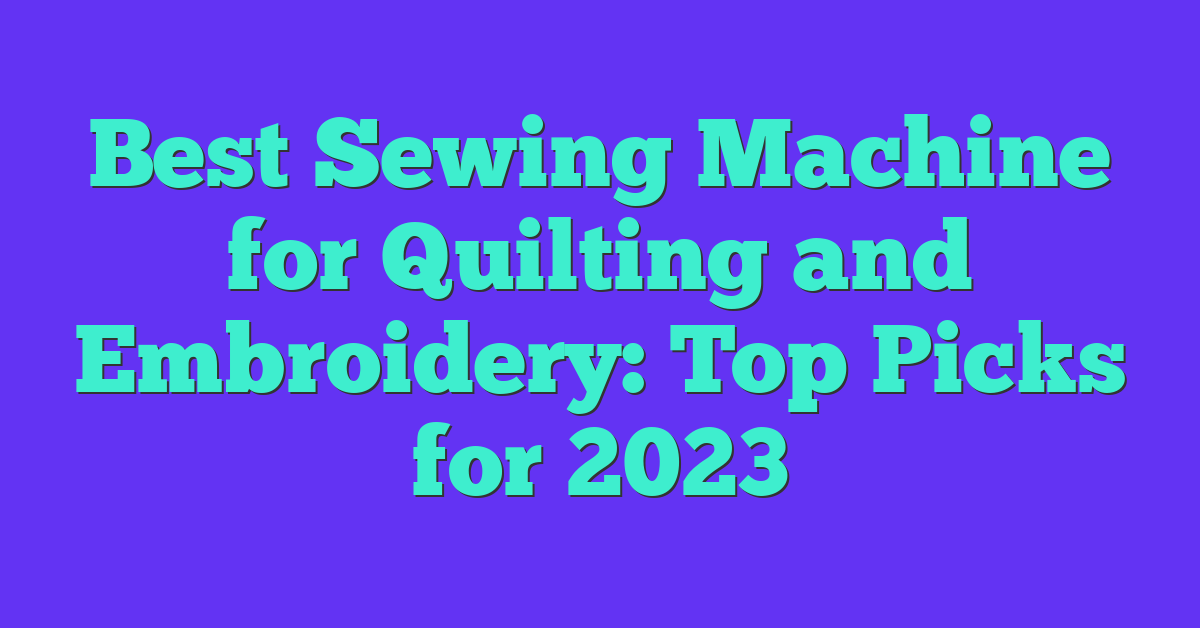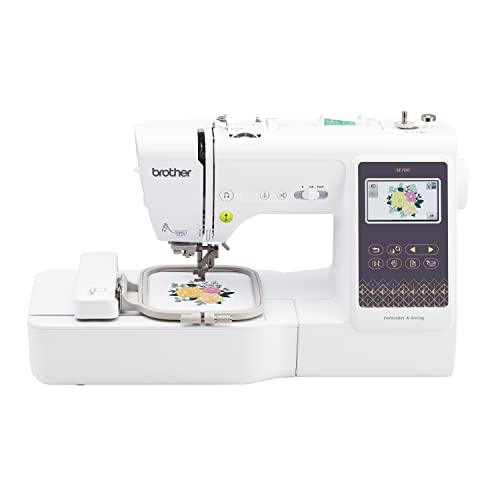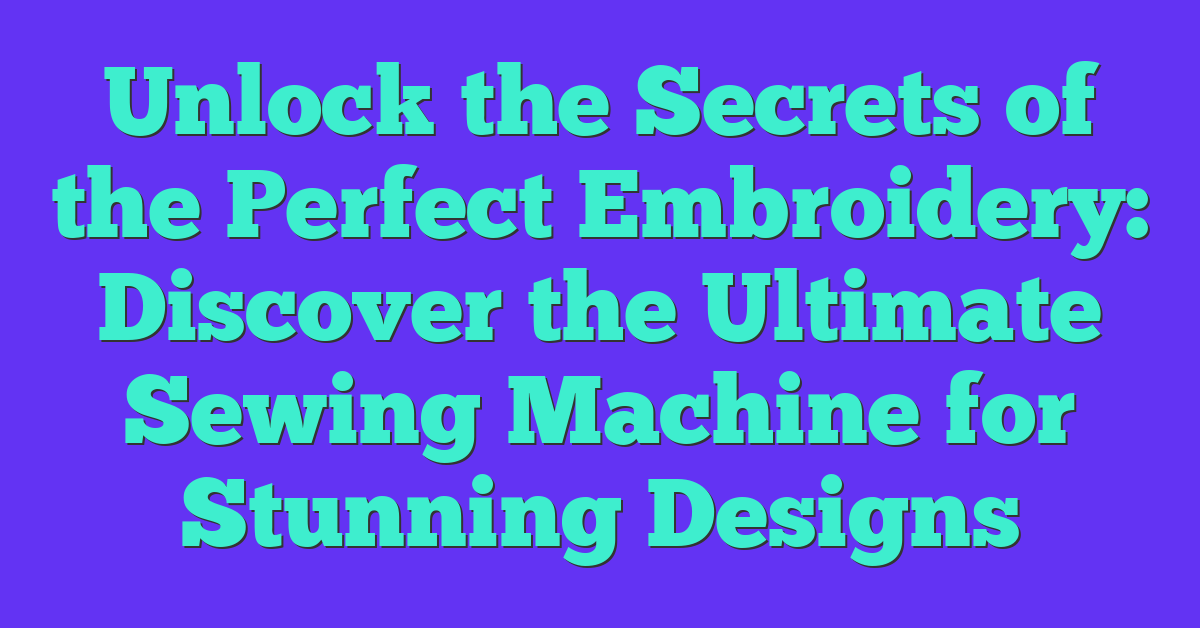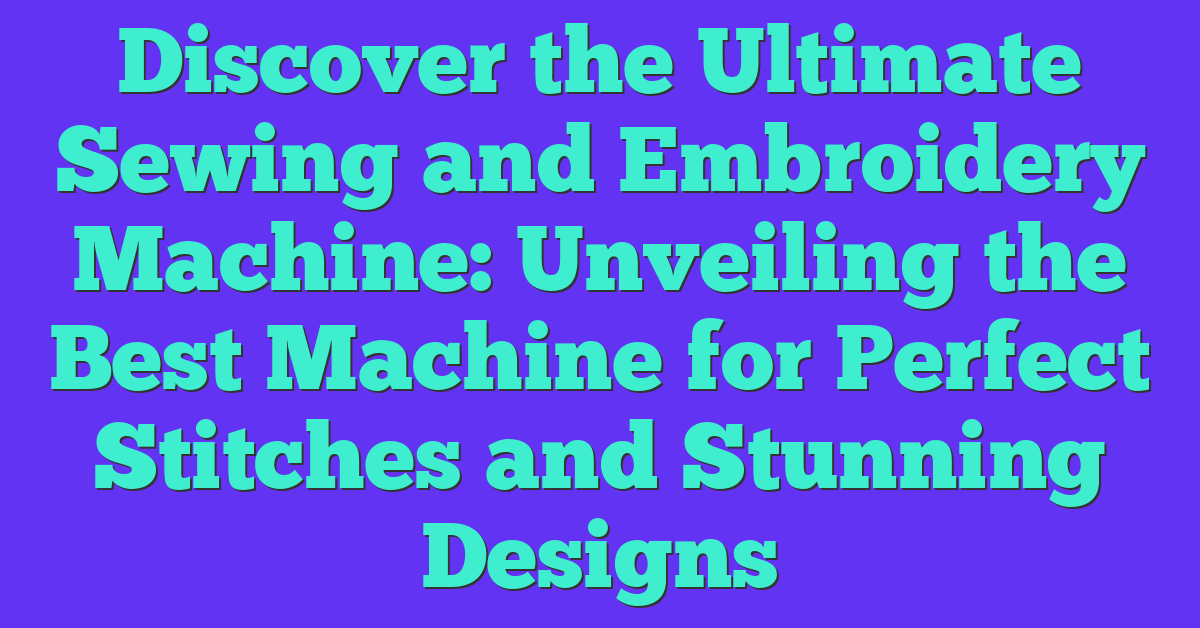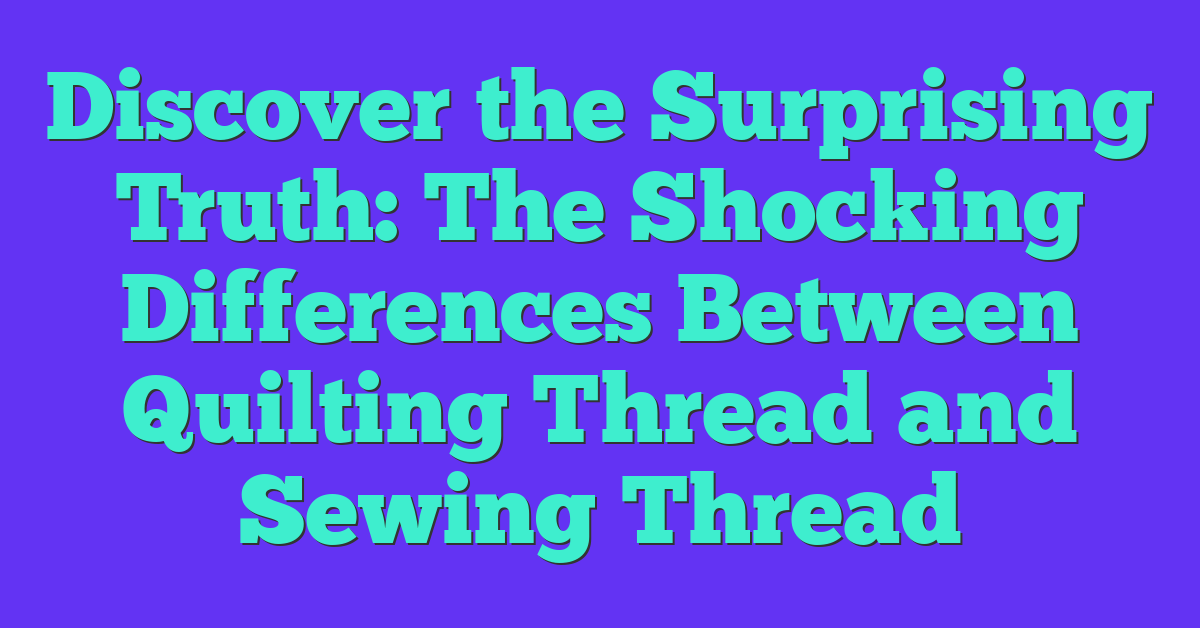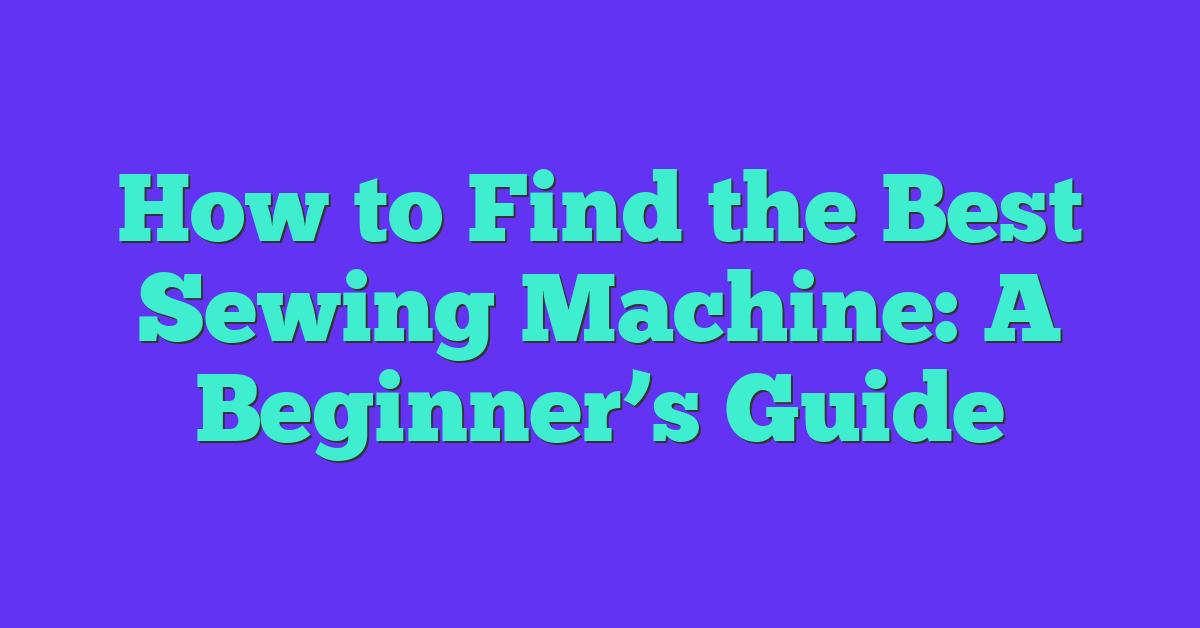As someone who loves to sew, I understand the importance of having the right sewing machine. Whether you’re a beginner or a professional, finding the best sewing machine for quilting and embroidery can be a daunting task. With so many options available on the market, it can be overwhelming to decide which one is right for you.
Understanding the differences between quilting and embroidery is the first step in finding the perfect sewing machine. Quilting involves sewing together multiple layers of fabric to create a thick, warm blanket or quilt. Embroidery, on the other hand, involves adding decorative designs to fabric using thread and a needle. While some sewing machines are designed specifically for quilting or embroidery, there are also machines that can do both.
When looking for the best sewing machine for quilting and embroidery, there are several key features to consider. These include the machine’s speed, stitch options, and ease of use. It’s also important to consider the type of materials you’ll be working with, as some machines are better suited for certain fabrics than others. By taking these factors into account, you can find a sewing machine that will meet your needs and help you create beautiful quilts and embroidery designs.
Key Takeaways
- Understanding the differences between quilting and embroidery is important when choosing a sewing machine.
- Key features to consider when choosing a sewing machine include speed, stitch options, and ease of use.
- Consider the type of materials you’ll be working with to ensure you choose a machine that can handle them.
Understanding Quilting and Embroidery
As a sewing enthusiast, I have always been fascinated by the different techniques and crafts that can be achieved with a sewing machine. Two of my favorite sewing projects are quilting and embroidery.
Quilting involves sewing together layers of fabric to create a thicker and warmer material. It is a great way to recycle old fabrics and create cozy blankets, pillows, or even clothing. Quilting can be done by hand or with a sewing machine, and there are different techniques and patterns to explore.
Embroidery, on the other hand, is the art of decorating fabric with needle and thread. It can be used to add intricate designs, lettering, or images to clothing, accessories, or home decor items. Embroidery can be done by hand or with a specialized embroidery machine, and there are different types of stitches and threads to experiment with.
Both quilting and embroidery can be a fun and rewarding hobby or craft, allowing you to express your creativity and make unique items for yourself or as gifts. However, it is important to have the right tools and equipment to achieve the best results.
When it comes to quilting and embroidery, having a good sewing machine is essential. A sewing machine that is specifically designed for quilting and embroidery can make the process easier and more efficient, with features such as larger workspaces, automatic needle threading, and built-in embroidery designs.
Overall, quilting and embroidery are two versatile and enjoyable sewing projects that can be done by anyone, regardless of skill level. With the right tools and techniques, you can create beautiful and functional items that reflect your personal style and creativity.
Types of Sewing Machines
When it comes to sewing machines, there are two main types: computerized and mechanical. Each type has its own unique features and benefits, so it’s important to consider which one is right for you before making a purchase.
Computerized Sewing Machines
Computerized sewing machines are the more advanced of the two types. They are equipped with a computerized system that allows for greater precision and control over your stitches. Some of the key features of computerized machines include:
- Automatic needle threading
- LCD screens for easy stitch selection
- Built-in stitch patterns
- Adjustable stitch length and width
- Automatic tension control
- Programmable stitch sequences
Computerized sewing machines are ideal for those who want to create intricate designs and patterns. They are also great for those who want to save time and effort, as they can complete tasks more quickly and accurately than mechanical machines.
Mechanical Sewing Machines
Mechanical sewing machines are the more traditional of the two types. They are operated manually, with no computerized system to assist with stitching. Some of the key features of mechanical machines include:
- Simple, straightforward design
- Easy to use and maintain
- Affordable price point
- Durability and reliability
Mechanical sewing machines are ideal for those who are just starting out with sewing. They are also great for those who prefer a more hands-on approach to their work, as they require more manual effort and attention to detail.
When it comes to choosing between computerized and mechanical sewing machines, it ultimately comes down to personal preference and the type of projects you plan to work on. If you’re looking for precision and ease of use, a computerized machine may be the way to go. If you prefer a more traditional approach and want to save money, a mechanical machine may be the better choice.
Key Features of a Good Sewing Machine
When it comes to choosing the best sewing machine for quilting and embroidery, there are a few key features that you should look for. In this section, I will discuss some of the most important features that you should consider when shopping for a sewing machine.
Built-in Stitches and Designs
A good sewing machine for quilting and embroidery should have a variety of built-in stitches and designs. This will allow you to create a wide range of projects and add unique decorative touches to your work. Look for a machine that has a range of decorative stitches, zigzag stitches, buttonholes, and alphabets. The more versatile the machine, the more creative you can be with your projects.
Automatic Needle Threader
Threading a needle can be a frustrating and time-consuming task, especially if you have poor eyesight or shaky hands. That’s why an automatic needle threader is a must-have feature for any sewing machine. With this feature, you can easily thread your needle with just the push of a button.

Free Arm and Light
A free arm is an essential feature for any sewing machine, especially when it comes to quilting and embroidery. This feature allows you to sew cuffs, sleeves, and other small items with ease. Additionally, a built-in light is also important, as it will illuminate your work area and help you see your stitches more clearly.
Extension Table and Walking Foot
When it comes to quilting, an extension table and walking foot are two features that you should look for in a sewing machine. An extension table provides a larger work surface, which is especially useful when working on larger quilts. A walking foot, on the other hand, helps to evenly feed multiple layers of fabric through the machine, which is essential for quilting.
Speed Control
Finally, a good sewing machine for quilting and embroidery should have speed control. This feature allows you to adjust the speed of the machine to suit your needs, which is especially useful when working on delicate or intricate projects.
In summary, when shopping for a sewing machine for quilting and embroidery, look for one that has a range of built-in stitches and designs, an automatic needle threader, a free arm and light, an extension table and walking foot, and speed control. These features will help you create beautiful and professional-looking projects with ease.
Top Sewing Machines for Quilting and Embroidery
« Singer Stylist 7258 Review: A Comprehensive Guide to the Best Sewing Machine for Beginners
Best Kids Sewing Machine: A Guide to Choosing the Perfect One for Your Child »
As someone who loves to quilt and embroider, I know how important it is to have a reliable and versatile sewing machine. After researching and testing various models, I have compiled a list of the top sewing machines for quilting and embroidery.
Brother HC1850
The Brother HC1850 is a great entry-level sewing and quilting machine that also offers basic embroidery capabilities. It comes with 130 built-in stitches, including 8 styles of one-step buttonholes, and a detachable wide table for larger projects. The machine also has a built-in thread cutter and automatic needle threader, making it easy to use. However, the embroidery area is small, so it may not be the best option for larger embroidery projects.
Juki TL-2000Qi
The Juki TL-2000Qi is a high-end sewing and quilting machine that is also great for embroidery. It features a large work area, making it easy to maneuver large quilts and embroidery projects. The machine has a single needle lockstitch, automatic thread trimmer, and a knee lift lever. However, it does not come with embroidery capabilities out of the box, so you will need to purchase an embroidery attachment separately.
Singer Quantum Stylist 9960
The Singer Quantum Stylist 9960 is a versatile sewing machine that is great for both quilting and embroidery. It comes with 600 built-in stitches, including 5 alphanumeric fonts and 13 one-step buttonholes. The machine also features an automatic needle threader, thread cutter, and a drop-in bobbin system. However, the embroidery area is small, so it may not be the best option for larger embroidery projects.
Brother XR9550
The Brother XR9550 is a great sewing and quilting machine that also offers basic embroidery capabilities. It comes with 165 built-in stitches, including 8 styles of one-step buttonholes, and a detachable wide table for larger projects. The machine also has a built-in thread cutter and automatic needle threader, making it easy to use. However, the embroidery area is small, so it may not be the best option for larger embroidery projects.
Brother CS7000X
The Brother CS7000X is a versatile sewing machine that is great for both quilting and embroidery. It comes with 70 built-in stitches, including 7 styles of one-step buttonholes, and a detachable wide table for larger projects. The machine also features an automatic needle threader, thread cutter, and a drop-in bobbin system. However, the embroidery area is small, so it may not be the best option for larger embroidery projects.
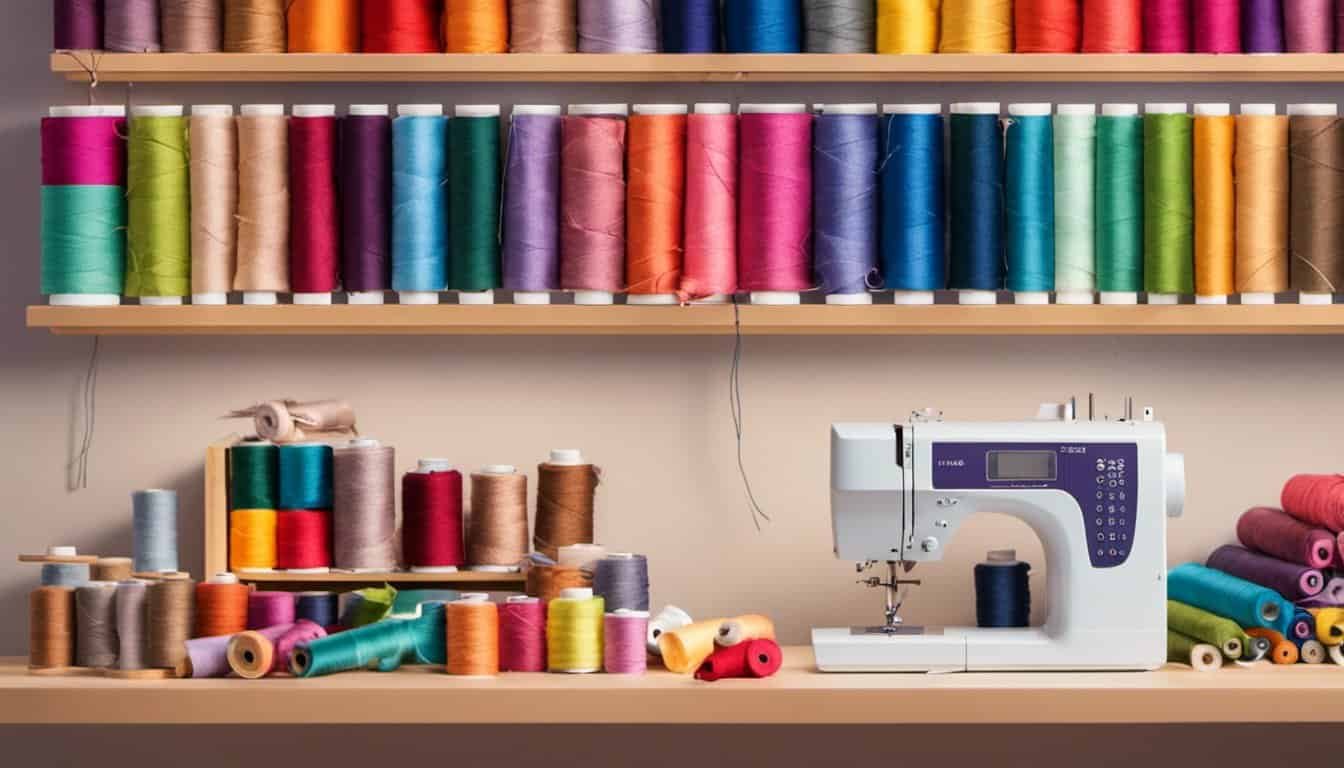
Baby Lock Zest
The Baby Lock Zest is a great entry-level sewing machine that is also great for quilting and embroidery. It comes with 15 built-in stitches, including a 4-step buttonhole, and a free arm for sewing cuffs and sleeves. The machine also features an automatic needle threader and a drop-in bobbin system. However, it does not come with embroidery capabilities out of the box, so you will need to purchase an embroidery attachment separately.
Baby Lock Jazz II
The Baby Lock Jazz II is a high-end sewing and quilting machine that is also great for embroidery. It features a large work area, making it easy to maneuver large quilts and embroidery projects. The machine has a single needle lockstitch, automatic thread trimmer, and a knee lift lever. However, it does not come with embroidery capabilities out of the box, so you will need to purchase an embroidery attachment separately.
Brother XR3774
The Brother XR3774 is a great entry-level sewing and quilting machine that also offers basic embroidery capabilities. It comes with 37 built-in stitches, including a 1-step buttonhole, and a detachable wide table for larger projects. The machine also has a built-in thread cutter and automatic needle threader, making it easy to use. However, the embroidery area is small, so it may not be the best option for larger embroidery projects.
Singer 9960
The Singer 9960 is a versatile sewing machine that is great for both quilting and embroidery. It comes with 600 built-in stitches, including 5 alphanumeric fonts and 13 one-step buttonholes. The machine also features an automatic needle threader, thread cutter, and a drop-in bobbin system. However, the embroidery area is small, so it may not be the best option for larger embroidery projects.
Janome Memory Craft 6650
The Janome Memory Craft 6650 is a high-end sewing and quilting machine that is also great for embroidery. It features a large work area, making it easy to maneuver large quilts and embroidery projects. The machine has a single needle lockstitch, automatic thread trimmer, and a knee lift lever.
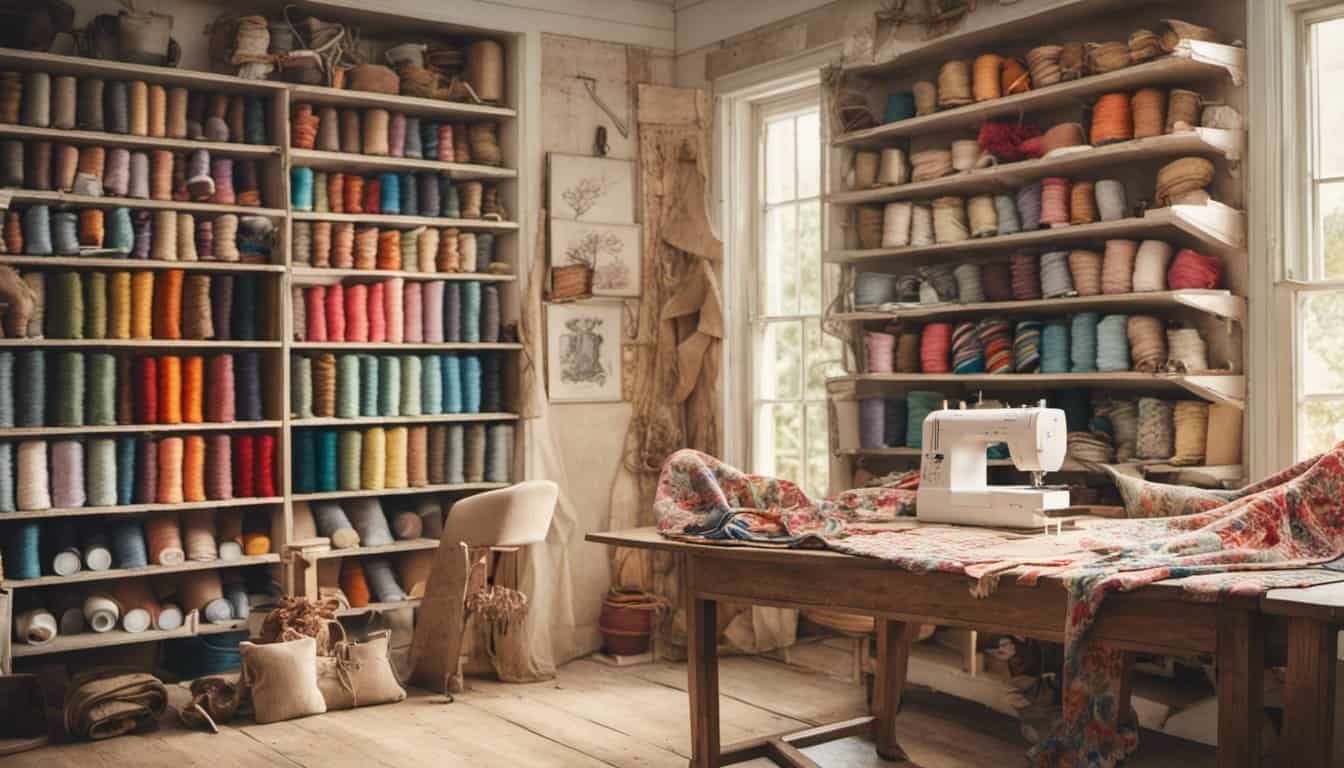
Budget-Friendly Options
As someone who loves to quilt and embroider, I know that these hobbies can be expensive. That’s why I’ve done some research to find the best budget-friendly options for sewing machines that can handle both quilting and embroidery.
One great option is the Brother XR9550. This machine is an affordable choice for those who are just starting out with quilting and embroidery. It has 165 built-in stitches and eight styles of one-step auto-size buttonholes. The machine also features an LCD screen, which makes it easy to select stitches and adjust settings. I love that it comes with a wide table, which is perfect for quilting larger projects.
Another entry-level embroidery machine that won’t break the bank is the Brother XR3774. This machine is perfect for beginners who want to try their hand at embroidery without spending a lot of money. It has 37 built-in stitches and an easy-to-use needle threading system. The machine also comes with a wide table, making it perfect for quilting larger projects.
Both of these machines are great options for those who want to quilt and embroider without spending a lot of money. They are both made by Brother, which is a trusted brand in the sewing world. While they may not have all of the bells and whistles of more expensive machines, they are perfect for those who are just starting out and want to learn the basics of quilting and embroidery.
Sewing Machines for Different Materials
When it comes to quilting and embroidery, choosing the right sewing machine for the material you’ll be working with is crucial. Different materials require different needles, thread, and stitching techniques, and not all sewing machines are created equal in terms of handling different types of fabrics. Here are some sewing machines that are great for working with different materials:
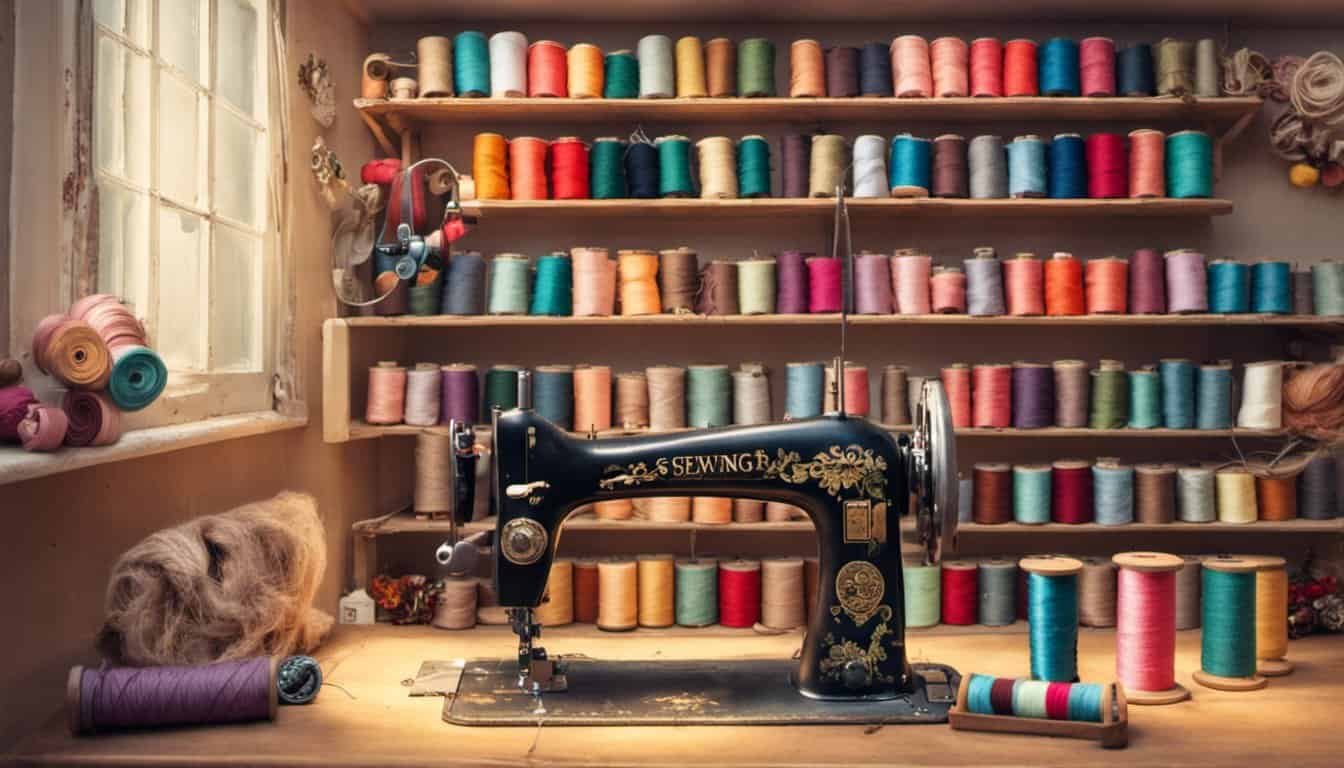
Denim
If you plan on working with denim, you’ll need a sewing machine that can handle the thickness and durability of this fabric. Look for a machine with a heavy-duty motor and a strong needle that can pierce through multiple layers of denim without breaking. The Singer Heavy Duty 4452 is a great option for sewing denim thanks to its powerful motor and heavy-duty metal frame.
Zippers
Sewing zippers can be tricky, but a sewing machine with a zipper foot attachment can make the process much easier. The zipper foot allows you to sew close to the teeth of the zipper without accidentally sewing over them. The Brother CS7000X comes with a zipper foot attachment and is versatile enough to handle a variety of materials.
Cotton and Denim
If you plan on working with both cotton and denim fabrics, you’ll need a machine that can handle both. The Janome HD3000 is a great option for sewing both cotton and denim thanks to its heavy-duty construction and adjustable presser foot pressure.
Upholstery Fabric
Upholstery fabric can be thick and difficult to sew, so you’ll need a sewing machine that can handle the weight and thickness of this material. Look for a machine with a powerful motor and a walking foot attachment, which will help feed the fabric evenly through the machine. The Singer Quantum Stylist 9960 is a versatile machine that can handle a variety of materials, including upholstery fabric. It also comes with a walking foot attachment.
Remember, no matter what type of material you’re working with, always test your stitching on a scrap piece of fabric before sewing on your actual project. This will help ensure that your stitching is even and that your machine is handling the material properly.

Advanced Features for Professionals
As a professional quilter and embroiderer, I rely on advanced features to create beautiful and intricate designs. These features help me save time and produce high-quality work. Here are some of the advanced features that I find most useful:
Throat Space
A larger throat space allows me to work on larger quilts and embroidery projects. This is especially important when working on king-size quilts or large embroidery designs. I prefer sewing machines with a throat space of at least 9 inches.
Knee Lifter
A knee lifter allows me to lift the presser foot without using my hands. This is a great feature when working with thick fabrics or when I need to pivot my fabric frequently. It also helps reduce hand fatigue during long sewing sessions.
Fonts
Having a variety of fonts to choose from allows me to add personalized text to my quilts and embroidery designs. I prefer machines that offer a wide range of font options and the ability to adjust the size and spacing of the letters.
Foot Pedal
A foot pedal that offers variable speed control allows me to sew at a comfortable pace. This is especially important when working on intricate designs that require precise stitching.

Top-Loading Bobbin
A top-loading bobbin system makes it easy to change the bobbin without having to remove the fabric from the machine. This saves time and allows me to quickly switch between thread colors.
Free Motion Sewing
Free motion sewing allows me to create intricate designs by moving the fabric freely under the needle. This is a great feature for creating custom quilting designs and adding texture to embroidery projects.
Basic Stitches
While I use advanced stitches for most of my work, having a selection of basic stitches is still important. Basic stitches are great for piecing quilts and adding finishing touches to embroidery designs.
Monogramming
Monogramming is a great way to add a personal touch to quilts and embroidery projects. Machines that offer monogramming features allow me to quickly and easily add initials or names to my work.
LCD Screen
An LCD screen allows me to easily adjust settings like stitch length and width. It also makes it easy to select different stitches and fonts.

LCD Touchscreen
A touchscreen interface makes it easy to navigate through different settings and options. It also allows me to import new designs and customize existing ones.
Import New Designs
The ability to import new designs allows me to expand my library of embroidery designs and create custom designs for my clients. I prefer machines that offer USB connectivity and the ability to import designs in a variety of formats.
Sewing Machine Models
There are many sewing machine models on the market that offer advanced features for professionals. Some of my favorites include the Brother Innov-ís NQ3600D, Janome Horizon Memory Craft 9400QCP, and the Singer Quantum Stylist 9960.
Metal Parts
Machines with metal parts are more durable and reliable than those with plastic parts. I prefer machines with metal frames and metal internal parts for added durability.
Advanced Machine
An advanced machine with a wide range of features allows me to take my quilting and embroidery to the next level. While these machines can be more expensive, they are worth the investment for professionals who rely on their machines for their livelihood.
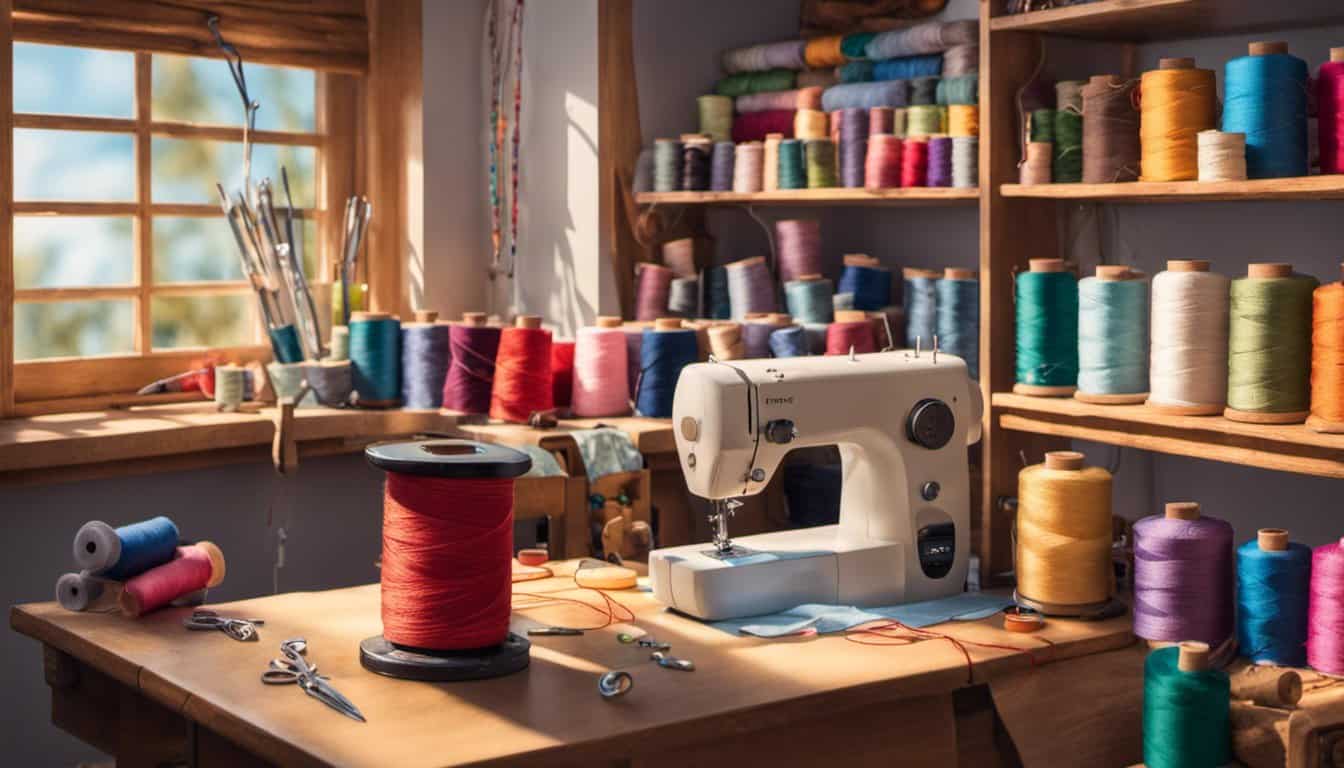
Wide Table Extension
A wide table extension provides additional space for working on large quilts and embroidery projects. This is especially important when working on king-size quilts or large embroidery designs.
Conclusion
After researching and testing various sewing machines for quilting and embroidery, I have found that the Brother SE600 Sewing and Embroidery Machine is the best choice for both reliable performance and user-friendly operation.
As a beginner sewist, I found this machine to be easy to use and navigate, with a color touch screen that made it simple to select and edit embroidery designs. It also offers a wide range of built-in stitches and embroidery patterns, making it a versatile choice for a variety of projects.
For more experienced sewists, the Brother SE600 still offers plenty of advanced features, such as adjustable thread tension and a drop-in bobbin system, that allow for precise and professional-looking stitching.
Overall, the Brother SE600 Sewing and Embroidery Machine is a great choice for anyone looking for a reliable and user-friendly machine that can handle both quilting and embroidery projects with ease.

Frequently Asked Questions
What is the difference between an embroidery machine and a quilting machine?
Embroidery machines are designed to create intricate designs and patterns on fabric using thread. They usually have a smaller sewing area and a built-in embroidery hoop. On the other hand, quilting machines are designed to stitch together multiple layers of fabric to create a quilt. They typically have a larger throat space to accommodate the bulk of the quilt.
Can you use a sewing and embroidery machine for quilting?
Yes, many sewing and embroidery machines have features that make them suitable for quilting. Look for machines with a large throat space, a walking foot, and a quilting foot. Some machines also have built-in quilting stitches and a drop feed feature for free-motion quilting.
What sewing machine do quilters prefer?
Quilters prefer machines with a large throat space, a walking foot, and a quilting foot. They also look for machines with adjustable stitch length and width, as well as a wide range of stitch options. Many quilters prefer computerized machines for their ease of use and precision stitching.
What is the best machine for quilting?
The best machine for quilting depends on your needs and budget. Some popular options include the Brother SE1900, Janome 2212, and Singer Quantum Stylist 9960. Look for machines with a large throat space, adjustable stitch length and width, and a variety of stitch options.
What are the benefits of a computerized quilting machine?
Computerized quilting machines offer many benefits, including precision stitching, ease of use, and a wide range of stitch options. They also often have features like automatic thread cutting, needle up/down positioning, and programmable stitch patterns.

What features should I look for in a large throat sewing machine for quilting?
When looking for a large throat sewing machine for quilting, look for machines with a large throat space, a walking foot, and a quilting foot. Adjustable stitch length and width, a variety of stitch options, and a drop feed feature for free-motion quilting are also important. Some machines also have built-in quilting stitches and a knee lifter for hands-free control.

